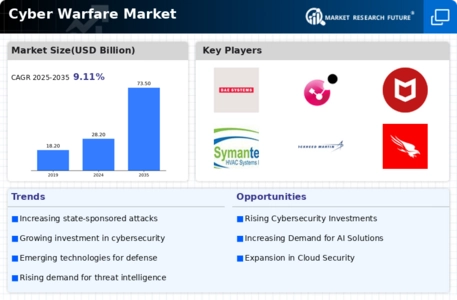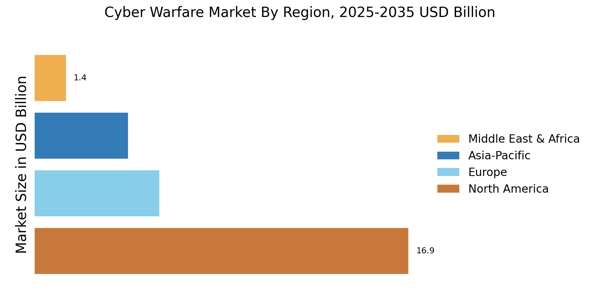Cyber Warfare Market Summary
As per Market Research Future analysis, the Cyber Warfare Market Size was estimated at 28.16 USD Billion in 2024. The Cyber Warfare industry is projected to grow from 30.73 USD Billion in 2025 to 73.48 USD Billion by 2035, exhibiting a compound annual growth rate (CAGR) of 9.11% during the forecast period 2025 - 2035
Key Market Trends & Highlights
The Cyber Warfare Market is experiencing robust growth driven by escalating threats and technological advancements.
- Investment in cyber defense is witnessing a marked increase, particularly in North America, as organizations prioritize security.
- Offensive cyber capabilities are emerging as a critical focus area, especially in the Asia-Pacific region, reflecting a shift in strategic priorities.
- Integration of advanced technologies, such as AI and machine learning, is becoming prevalent in both network security and incident response segments.
- Escalating cyber threats and government initiatives are key drivers propelling the market forward, with rising cyber insurance adoption further influencing growth.
Market Size & Forecast
| 2024 Market Size | 28.16 (USD Billion) |
| 2035 Market Size | 73.48 (USD Billion) |
| CAGR (2025 - 2035) | 9.11% |
Major Players
Raytheon Technologies (US), Northrop Grumman (US), Lockheed Martin (US), BAE Systems (GB), Thales Group (FR), General Dynamics (US), L3Harris Technologies (US), Cisco Systems (US), Palantir Technologies (US)


















Leave a Comment